Kumano Kodo in Japan a pilgrimage from Osaka to Ise
An eight-night trek along Japan’s legendary Kumano Kodo clears the mind and nurtures the soul.
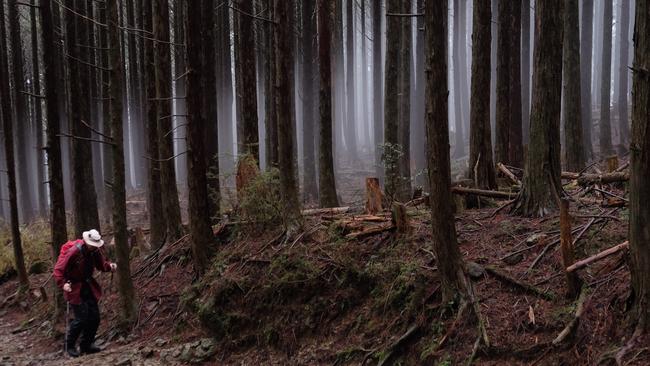
The emperor doesn’t walk,” says Walk Japan guide Ayuki Shio, as I suck in deep breaths of crisp mountain air, hauling myself up the steep flanks of Mount Tsurugi, high above the Tonda River. “Commoners walk.”
Gnarled roots of cedar trees protrude like varicose veins along the narrow trail. The roar of the river fades as our group of 12 climbs higher, until we reach the silence of a small cave called Tainai-kuguri, formed between moss-covered boulders. To squeeze through the gap is to pass through nature’s womb, Ayuki tells us. I duck my head, enter the cave and walk towards the light.
For more than 1000 years, people have made pilgrimages along the Kumano Kodo, a series of ancient trails linking shrines on Japan’s Kii Peninsula, south of Osaka. It’s been a centre of animistic nature worship since prehistoric times; a place where the mountains, rivers, rocks and waterfalls embody Shinto deities known as “kami”.
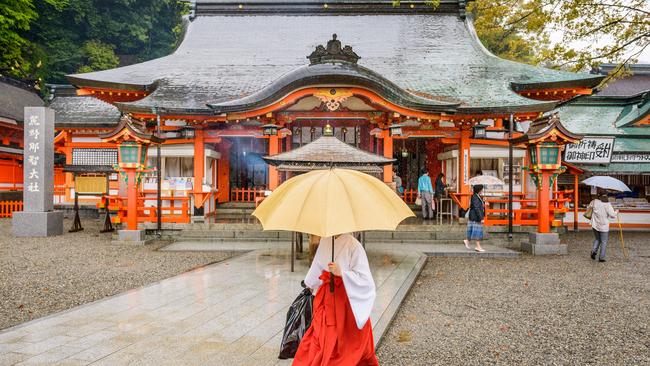
Emperors of the Heian period, between the 8th and 12th centuries, started the trend for pilgrimage, although as Ayuki explains, they would likely have been carried on palanquins, a covered conveyance hoisted upon the shoulders of strong men. Aristocrats, noblemen, samurai and commoners followed – most definitely on foot – seeking spiritual salvation or the chance to be ritually reborn, a reasonable incentive considering the not unlikely prospect of dying along the way. It was said the greater the hardship, the greater the enlightenment.
While we’re not offered palanquins, hardships are kept to a minimum as we hike the Nakahechi, or Imperial Route, of the Kumano Kodo, which links the three grand Kumano shrines, Hongu Taisha, Hayatama Taisha and Nachi Taisha, together known as Kumano Sanzan. The tour also calls in to the country’s most sacred Shinto shrine, in the coastal town of Ise, as well as Koyasan, birthplace of esoteric Buddhism in Japan. When Buddhism arrived in the 6th century it integrated harmoniously with Shintoism, a syncretism known as Shinbutsu-shugo, where the kami became manifestations of Buddhist deities. This distinct form of shared spirituality is a hallmark of the Kumano Kodo.
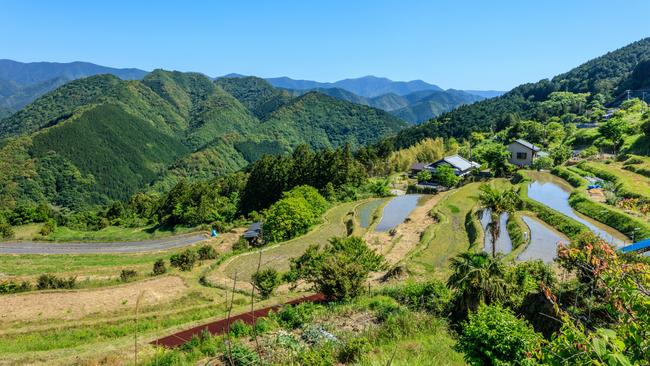
Our group forms a beautiful syncretism of its own. We come from all over the world; strangers bonded by a shared love of travel, hiking and cultural discovery. Over eight days we walk to our own rhythm, sometimes stretching out over hundreds of metres, sometimes glued tightly, and always forging new conversations. There’s plenty of private time to relax at the ryokan or soak in a private onsen, and at dinnertime we reconvene, dressed identically in our yukata robes, like a team uniform. It’s a wonderful dynamic.
Our first day climbs to Takahara, a village clinging to a hillside above a plunging, mist-filled valley. Waterwheels spin on terraced crop gardens, and a 600-year-old shrine crouches under a giant camphor tree, which would have been a seedling when the first emperors passed by here a thousand years ago.
Charismatic inn-keeper Jian Shino has curated an eclectic and homely guesthouse in the hills, filled with flowers, driftwood, hanging copper pots and stained-glass windows. Jian personifies the syncretic spirit of Kumano Kodo, and says his love for welcoming guests came from his time spent living in Spain. “I was treated like family,” he says, “and everyone who stays here is family, too.” After dinner he pulls out the flamenco guitar. We tap our toes, raise glasses of sake and shout, “Ole!”
The Spanish connection is no accident. In 2004, the Kumano Kodo joined Spain’s Camino de Santiago as the only UNESCO World Heritage-listed pilgrim routes in the world. It marked a revival for the trail, which had fallen into obscurity, partly due to the 1868 Meiji Restoration, a decree banning the Shinto-Buddhist amalgamation, which led to the removal or destruction of many Buddhist statues and objects. Large-scale forestry and infrastructure projects after World War II then drastically altered the physical landscape. The once great pilgrim trail was in danger of being lost forever, before UNESCO’s recognition brought it a global appeal. The trail synonymous with rebirth found itself suddenly reborn, and declining villages like Takahara found a new industry in housing a new breed of modern-day pilgrims.
The lodgings we stay at are incredibly diverse: a Buddhist temple in Koyasan, where we attend monks’ morning prayers; a former high school in the village of Koguchi; and a comparatively plush ryokan in Yunomine, site of ancient hot-water purification rites and one of Japan’s oldest onsen towns (it’s still tradition to boil an egg in the water).
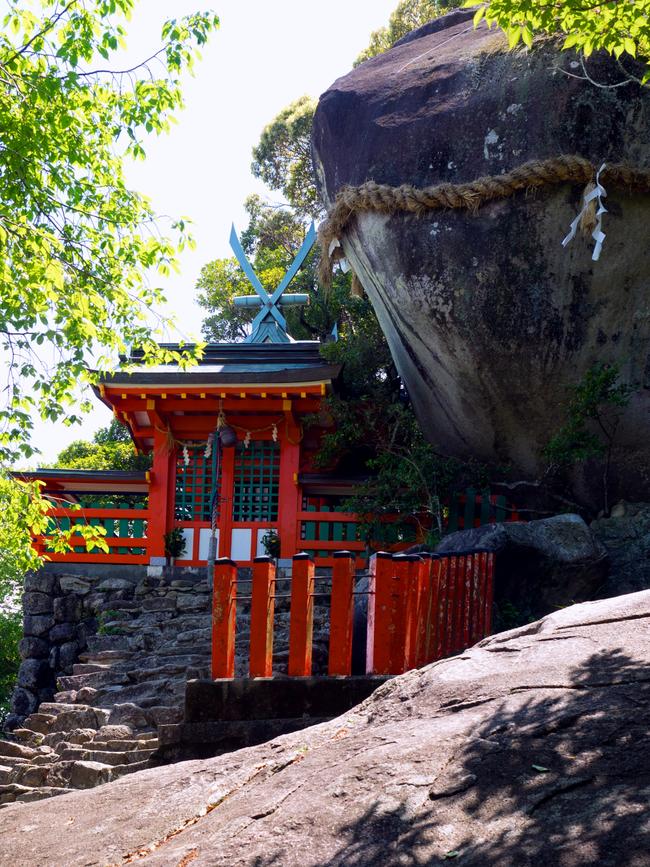
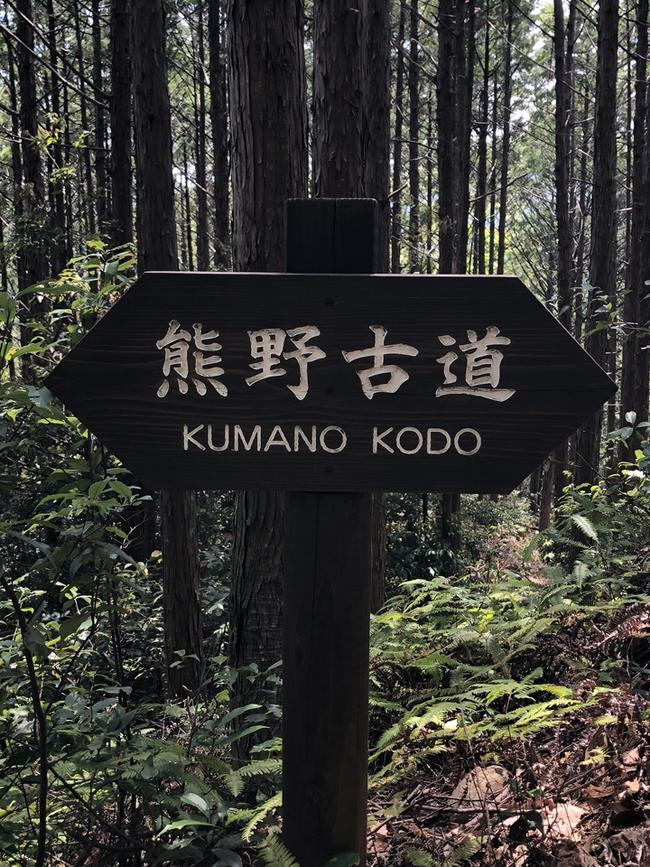
We sleep mostly on futon in traditional, tatami-matted rooms, with low tables, cushions and elegant tea pots. The communal meals are always an event. We sample hundreds of delicacies, never sure where to plunge the chopsticks first. Highlights include Jian’s foraged flowers and rhubarb-shoot tempura, smoked mackerel and skewered river trout, and succulent cuts of Mikumano beef that we sizzle over a flame at the table. Bento boxes with our lunches are handed out each morning, but we carry little else, with all luggage sent ahead and waiting in our rooms.
Our days settle into a well-practised routine. “Rise and shrine!” becomes our morning catchcry as we boot up and prepare for a day of paying observance and adding a stamp to our trail passports at the many subsidary shrines known as oji that line the route and house the “child deities” of Kumano and offer reassurance to pilgrims.
Light rain starts to fall as we leave Takahara and descend through the forest to a bridge over a braided river in the village of Chikatsuyu. We stroll through the silent streets, passing rice paddies and homes with kaya-grass thatched roofs. Crabs and skinks scurry in the cracks of stone walls, mist swaddles dark green hills, and the rain releases a sweet, floral scent from the cracked pavement.
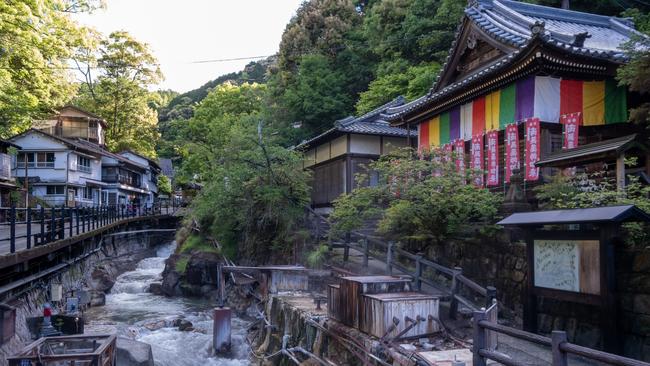
It’s been a tough, 16km day, but our aches are soothed by the bliss of the evening onsen in Yunomine. I sit outside in the natural thermal water as monkeys scamper in the wet forest. A veil of mist lowers and melds with the steam rising from the onsen, until I can’t tell where the land stops and the sky starts, and I’m simply floating on a hot water cloud. Just an everyday transcendental experience on Kumano Kodo.
The rain only intensifies next morning, and with it the beauty of the landscape. Umbrellas bob like Technicolor toadstools as we pass shacks and shrines, rust-coloured maple trees, tea groves in hillside terraces, clusters of ferns and mossy jizo statues, the guardian deities of children and travellers, dressed in red bibs to ward off evil. We must look a bedraggled bunch of pilgrims, sloshing through puddles, with torn ponchos, steamed-up glasses and dripping noses. But our inner spirits cannot be fatigued on this final approach to the first of the three grand shrines.
Kumano Hongu Taisha, with its sweeping roof of hinoki cypress bark, is the heart of all the Kumano Kodo pilgrimage routes. The shrine used to occupy a site a kilometre away, at the confluence of the Kumano and Otonashi rivers, before it was swept away in a flood in 1889. The largest torii gate in the world still guards the entrance to the old shrine grounds, now just a grassy clearing on a sandbar, surrounded by mountains and dotted with sprawling oak trees.
We wake to blue skies and excited shouts of “sun-shrine!” The overnight rain has given the trees a glow-up. Even the air feels freshly scrubbed. A Japanese nightingale sings from the treetops as we climb to a lookout point, where a view of endless mountains stretches to the horizon, and the Kumano River glistens like a silver ribbon in the lowlands. The landscape seems to suddenly swamp us, provoking introspection. “There are things that are bigger than us in this world,” a guest muses. “Being on this trail has taught me I don’t have to be so hard on myself. Things are put in perspective.”
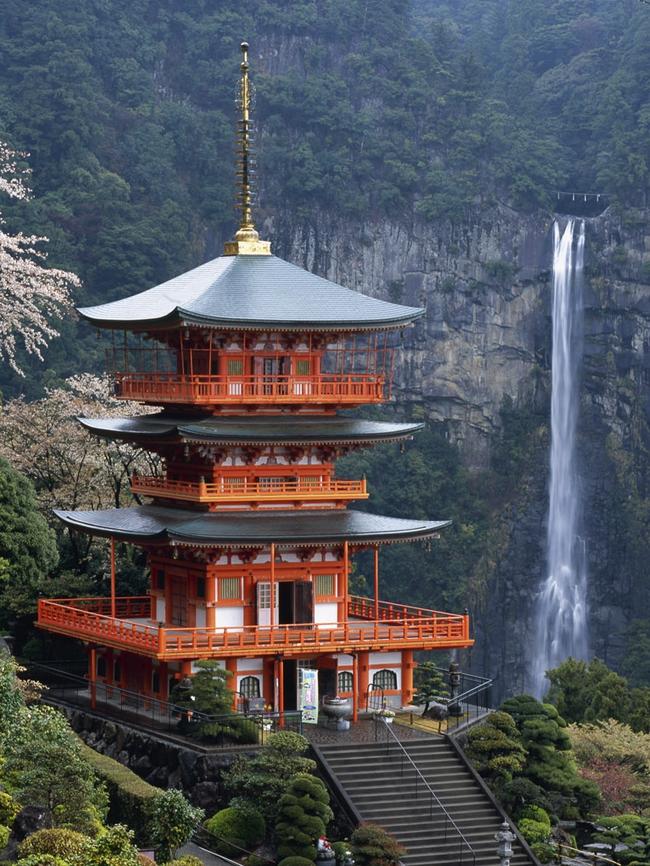
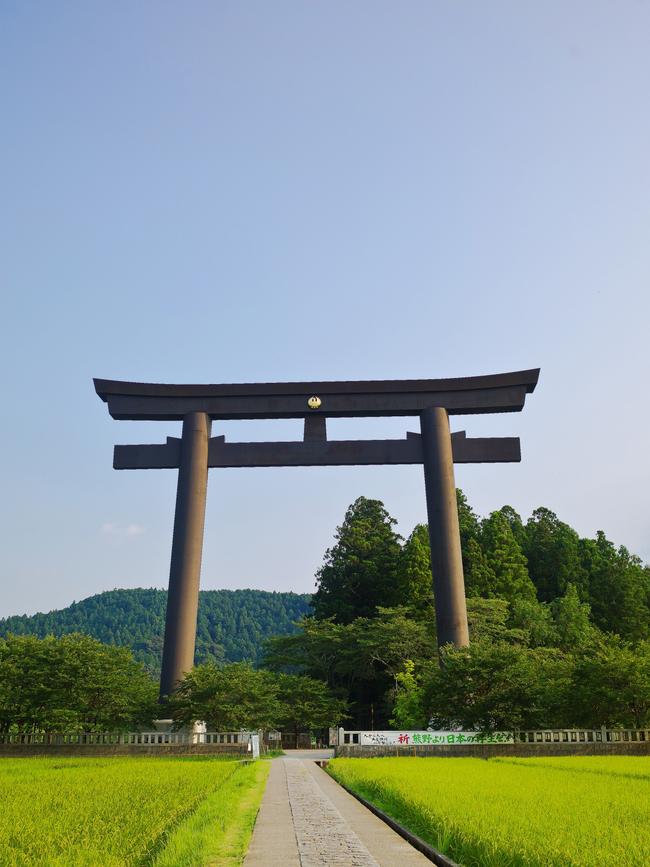
Remnants of the trail’s glory days are littered everywhere. A cherry blossom tree has grown to full height inside the stone footprint of an old tea house that would have once offered food and shelter to pilgrims. These “hatago”, or travellers’ inns, operated until the 1920s and engaged in fierce competition for customers. I ask Ayuki what the oldest relics on the trail are. But my question misses the point. “Kumano Kodo is about renewal, not relics,” she explains. “The reward comes from within.” I think I understand. You don’t look back, you look inside.
Our inner fortitude is put to the test on our last walking day, as we face an 800 vertical metre climb to the Echizen-toge Pass, the highest point on the Nakahechi route. Dappled light filters through a towering curtain of cedars, and mist drifts across our shadows as we ascend in silence, stunned by either the beauty of this quintessentially Japanese scene or the exertion. Even the great poet Fujiwara no Teika couldn’t quite put it into words when he came here in 1201, writing in his pilgrimage diary: “This route is very rough and difficult; it is impossible to describe how tough it is.”
They call this section Dogiri-zaka, or “body breaking slope”. Our bodies refuse to be broken, though, and the summit is a rich reward. We descend into a gorgeous glade beside a crystal clear stream. While the rest of the group unpacks their lunch, I take my shoes off, wade into the water and unpack my mind. Sitting on a rock, with my eyes shut and the sun on my face, I listen to the sound of the running water, and feel completely relaxed, maybe even reborn.
Happy to be a regular, nature-worshipping commoner.
IN THE KNOW
Walk Japan’s eight-night Kumano Kodo Pilgrimage is ¥440,000 ($4620). Starting in Osaka and finishing in Ise, the tour takes in Koyasan, the three grand shrines of Kumano Sanzan, and Ise Jingu, Japan’s most sacred Shinto shrine. Price is inclusive of accommodation, transfers, breakfasts, dinners and most lunches. Average walking is 10km a day.
Ricky French was a guest of Walk Japan.

To join the conversation, please log in. Don't have an account? Register
Join the conversation, you are commenting as Logout